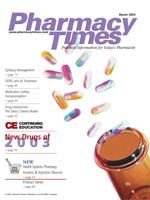Publication
Article
Pharmacy Times
ATS Improves Nerve Sensation
Anodyne Therapy System (ATS)?a device that uses nearinfrared light?may stimulate poor nerve sensation in diabetic patients. The only caveat is that it does not appear to benefit patients with severe impairment of sensation, according to a report published in Diabetes Care (January 2004). The device works by restoring sensation, reducing pain, and improving balance in patients with nerve damage known as diabetic peripheral neuropathy. Researchers believe that this noninvasive treatment increases blood flow by dilating blood vessels.
In a preliminary study, ATS reversed the symptoms of neuropathy, but it was not clear whether the device would prove beneficial in a trial comparing it with a similar-appearing but fake treatment. Therefore, the researchers evaluated the outcomes of 27 patients with diabetic neuropathy (18 patients with moderate sensory problems and 9 with severe impairments) who were treated with the sham or the real ATS 3 times a week for 2 weeks and then the real therapy for an additional 2 weeks.
At both 6 and 12 weeks of ATS, the participants with moderate problems had a dramatic drop in the number of body sites lacking sensation. Those undergoing the sham therapy, however, showed no sensory improvements. Also, ATS was linked with a reduction in pain and with improvements in balance.Yet, ATS did not produce major improvements in sensation, pain, or balance in the group with severe impairment.







